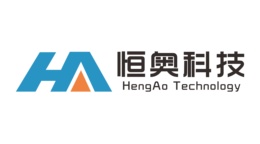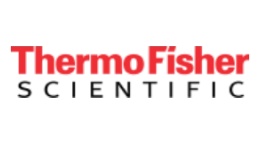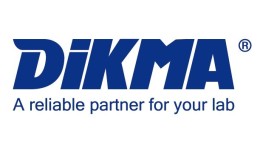方案详情文
智能文字提取功能测试中
Cell LysisMixing &Blending APPLICATIONNOTE Analysis of Pesticides in Fruit and Vegetable Products using aStandard QuEChERS Method and a Modified Method Involving theGeno/Grinder. With kind permission of: Lea Anderson-Smith, SPEX SamplePrep Patricia Atkins, SPEX CertiPrep Introduction Pesticide residues in agricultural food sources are widely considered to cause adverse healtheffects when consumed by humans. In particular, much of the produce sold in the U.S. isimported and concern over pesticide levels in these fruits and vegetables in comparison to thosegrown domestically has resulted in increased testing for pesticide residues. In 2003, the QuEChERS method for pesticide analysis was introduced by Anastassiades andLehotay et al. QuEChERS is an acronym for Quick, Easy, Cheap, Effective,Rugged, and Safe andallows for analysis of multiple pesticides, while offering faster and easier handling over previousmethods. The QuEChERS method is now widely used and has been adopted by the AOAC asmethod 2007.01"Determination of Pesticide Residues in Foods by Acetonitrile Extraction andPartitioning with Magnesium Sulfate.In Europe, the official method is EN 15662. For a typical analysis, 10-15 g samples of chopped and homogenized agricultural produce areplaced in 50 ml centrifuge tubes and an extracting solvent, such as acetonitrile, and anhydrousmagnesium sulfate and sodium acetate or sodium chloride salts are added. The tubes arecapped and shaken by hand for one minute to mix the contents and extract the pesticide intothe solvent. The samples are then treated with clean up materials, concentrated, and analyzed byGC/MS or LC/MS In this study, the Geno/Grinder was employed to homogenize the fruit/vegetable samples andto mix the produce rapidly and thoroughly with the salts and solvent in an effort to improve theextraction step. The goal of the study was to determine whether the use of the Geno/Grinderduring the extraction step would increase pesticide recovery over the traditional, manualQuEChERS method. Experimental Three fruit and vegetable matrices were chosen for the purpose of evaluating materials withdiffering density and toughness: 1) strawberries - soft; 2) apples - dense and tough; and 3)celery-fibrous. Strawberries are quite soft and preliminary tests verified that they could easilybe ground to a mushy, liquefied substance using the Geno/Grinder (grinding method describedbelow). Apples are tougher and denser and, not surprisingly, a longer grinding time wasrequired to effectively mash the fruit to an applesauce-like consistency. While celery is not asdense as apple, it is fibrous and tough and therefore difficult to grind effectively. Fresh strawberries, apples (Granny Smith), and celery were purchased from a local supermarketand cut into 1/4-1/2 inch-sized chunks, weighed out in 15.1 g quantities, and placed into 50ml round-bottomed LDPE centrifuge tubes. Each sample was spiked with 250 ul of a 40 ug/ ::APPLICATION NOTE SP024:Pesticide Anaylsis:StandardQuEChERS vs Modified Method ::APPARATUS:Geno/Grinder@ :: APPLICATIONS:QuEChERS /Pesticide Extraction 65 Liberty St Metuchen, NJ 08840 USA Tel:732-623-0465 Fax: 732-906-2492 E-mail: Sampleprep@spex.com www.spexsampleprep.com European Headquarters SPEX CertiPrep Ltd 2 Dalston Gardens Stanmore, HA7 1BQ, UK Tel:+44(0)20 8204 6656 Fax: +44(0)20 8204 6654 E-mail: sales@spexcertiprep.co.uk Web: www.spexcertiprep.co.uk ml solution of CAL-CARB-13 (a mix of 13 common pesticides available from SPEX CertiPrep) indichloromethane (10 ppm per sample). The pesticide mix was introduced into each tube bysyringe, taking care to control the flow of pesticide solution onto the fruit/vegetable sample.The tubes were capped and gently shaken by hand for 15 sec. to ensure an even distribution ofthe pesticide solution over the entire sample. The samples were placed in a refrigerator at 4℃and stored overnight. Traditional QuEChERS Method The spiked strawberry samples from four centrifuge tubes (each containing 15.1 g) werecollectively transferred into a single-serve blender and homogenized to a smooth consistency.Samples of 15.1 g were re-measured from this mixture and transferred back into the samecentrifuge tubes. Care was taken to transfer out liquid as well as solid material. Apple andcelery samples were spiked and homogenized in the same manner as the strawberry. To each tube of homogenized produce was added 6.0 g anhydrous magnesium sulfate, 1.5 ganhydrous sodium acetate, and 15 ml acetonitrile containing 1% glacial acetic acid. The tubeswere capped and shaken by hand for 1 min. The liquid in the strawberry tubes was observed tobe pink in color, the apple extract was pale yellow, and the celery extract a very saturated greencolor. All tubes were then centrifuged at 3500 rpm for 3 min. The supernatant liquid was removed,measured, and divided into two equal portions (5 ppm maximum pesticide per sample after thisstep) and transferred into 15 ml centrifuge tubes. Primary secondary amine (PSA) (25 mg x Vol (ml) supernatant) and graphitized carbon black(GCB) (5 mg xVol (ml) supernatant) were added to each tube. The sample tubes were cappedand shaken by hand for 30 sec., then centrifuged at 3200 rpm for 1 min. Modified QuEChERS Method using the Geno/Grinder To centrifuge tubes containing spiked produce samples were added 3 ceramic grindingcylinders (3/8"x7/8"angle cut part #2183) and 5 ml acetonitrile containing 1% glacial aceticacid. The tubes were capped and placed into a tube holder, clamped in place on the Geno/Grinder, and ground at 1500 rpm. After grinding for 2 min., the strawberry samples were wellground to a pulpy, liquid consistency. Since apple and celery are tougher materials, 6 min. grindtimes at 1500 rpm were required to achieve a well ground, mushy consistency. During preliminary test runs, it was found that addition of a small amount (5 ml) of solventimproved the grinding process by aiding the movement of the produce in the tube. Withoutsolvent, the harder fruits and vegetables tended to become packed down in the bottom of thetube and effective grinding was difficult to achieve. Alternatively, addition of the full 15 ml ofsolvent prior to grinding provided too much fluid and the grinding media were not able to makesufficient contact with the produce to achieve effective grinding. Through experimentation,it was determined that addition of 5 ml of solvent was optimal for effective grinding of a 15 gsample. To each tube was then added 6 g anhydrous magnesium sulfate, 1.5 g anhydrous sodiumacetate, and the remaining 10 ml acetonitrile (1% glacial acetic acid). The tubes were recapped,placed back on the Geno/Grinder and shaken for 1 min. at 1500 rpm.The liquid in thestrawberry tubes The liquid was observed to be pink in color, the apple extract was paleyellow, and the celery extract a very saturated green color. All material was well mixed andfree-flowing. The samples were then centrifuged at 3500 rpm for 3 min. The supernatant liquid was removedfrom each tube, measured, and divided into two equal samples (5 ppm max. pesticide after thisstep) and transferred into 15 centrifuge tubes. SPEX CertiPrep Ltd 2 Dalston Gardens Stanmore,HA7 1BQ,UK Tel:+44 (0)20 8204 6656 Fax: +44 (0)20 8204 6654 E-mail: sales@spexcertiprep.co.uk Web: www.spexcertiprep.co.uk PSA (25 mg x Vol (ml) supernatant) and GCB (5 mg x Vol (ml) supernatant) were added to eachtube. The sample tubes were capped, shaken on the Geno/Grinder for 30 sec. at 1500 rpm,then centrifuged at 3200 rpm for 1 min. Modified QuEChERS Method using the Geno/Grinder-All-In-One Additional samples of spiked strawberry were handled in a second manner. In an effortto determine whether the pre-homogenization step can be eliminated for soft fruits, 6 ganhydrous magnesium sulfate, 1.5 g anhydrous sodium acetate, and 15 ml acetonitrile (1%glacial acetic acid) were added to tubes containing 15.1 g of chunked strawberry. The tubeswere capped and clamped on the Geno/Grinder. After 2 min. of grinding at 1500 rpm the strawberry was fairly well ground, but some visiblechunks remained. The samples were ground an additional 2 min. (4 min. total), at which pointthe strawberry was very well ground and thoroughly mixed with the salts and solvent. Thesamples were centrifuged, the supernatant removed, and clean up was conducted as above,using the Geno/Grinder. Attempts to combine the homogenization and extraction steps for apple and celery were lesssuccessfull.. When the salts were combined with small chunks of produce, a tube was filledto capacity and the produce and grinding media could not move freely. Thus, impact of thegrinding media on the produce was impeded and only partial grinding was achieved. Preparation of Samples Following clean up and centrifugation, the supernatant was removed from each sample,transferred to a clean 15 ml tube (all methods), and concentrated down to near dryness(approximately 100 uL) by gently heating the tubes while passing a slow stream of nitrogenover the sample. Toluene was added to each sample to bring the total sample volume to 1ml. In many cases a viscous drop of material settled to the bottom of the centrifuge tube afteraddition of toluene. The material appeared to be soluble in aqueous solvents, but not in non-polar solvents and had a syrupy consistency. The toluene solution was removed by syringe and injected into GC sample vials, while theresidue material was left in the tube. For strawberry the residue was red for the samplesthat had been prepared using the Geno/Grinder and yellow for samples prepared using thestandard QuEChERS method. In the case of apple, the residue was golden for Geno/Grindersamples and brown for standard QuEChERS samples. For celery, a yellow residue remainedfor Geno/Grinder samples, while for standard QuEChERS samples a pale yellow drop wasobserved. Sample Analysis Samples were analyzed using an HP 5890-GC with a CV-5 capillary column and a 5972-MSDdetector. Scan range was 35-450 m/z with signal-to-noise of 3:1. Injected sample size was 1 ul. Your Science is Our Passion. Tel:732-623-0465 Fax: 732-906-2492 E-mail:Sampleprep@spex.com www.spexsampleprep.com European Headquarters SPEX CertiPrep Ltd 2 Dalston Gardens Stanmore, HA7 1BQ,UK Tel: +44(0)20 8204 6656 Fax: +44(0)20 8204 6654 E-mail: sales@spexcertiprep.co.uk Web: www.spexcertiprep.co.uk Results and Discussion At the beginning of the study, each sample was spiked with 250 ul of a solution of 13 pesticides,each present in a concentration of 40 ppm/ml. Thus, 10 ppm of each pesticide was introducedinto each produce sample. After extraction and centrifugation, the supernatant was removed anddivided into two equal replicates to continue the study. Therefore, each sample was divided intotwo and the maximum concentration of each pesticide in a sample at this point was 5 ppm. Recovery results for all three produce matrices are shown in Table 1 as total concentrationrecovered in ppm. Results for strawberry are shown graphically in Figure 1. The blue barsrepresent the samples that were prepared by manually shaking homogenized samples with thesalts and acetonitrile. The red bars represent the samples that were homogenized using the Geno/Grinder prior to the addition of the salts. Finally, the green bars (All in one) show the results forthe samples that were ground and mixed with the salts and acetonitrile simultaneously (no pre-homogenization). For all pesticides detected, significantly higher recoveries were obtained for the samples preparedusing the Geno/Grinder than for those prepared by hand. Interestingly, the samples groundsimultaneously with the salts and solvent (All in one)performed as well, or in some cases better,than the samples that were ground on the Geno/Grinder before addition of the salts. Thisindicates that this method is viable for soft produce matrices. The poorest recoveries were obtained for Dichloran and Chorothalonil. This was the case for allmatrices evaluated. In fact, for celery Chlorothalonil was not detected, even when the Geno/Grinder was used. Because the method used in this study was not optimized for a particular typeof pesticide, it is not surprising that some pesticides were not stable under the conditions used. Table 1 -Recovery of Pesticides in Produce Samples (ppm) Strawberry Apple Celery Pesticide Geno/Grinder Allin one QuEChERS Geno/Grinder QuEChERS Geno/Grinder QuEChERS Carbofuran 2.33 2.2 0.8 2.4 1.2 1.0 ND* Carbaryl 1.8 1.6 ND 1.8 0.4 ND ND Diphenylamine 1.8 2.2 ND 6.2 3.8 0.9 ND Chlorpropham 2.7 3.3 0.3 3.0 1.1 1.5 0.1 Dichloran 0.7 0.4 ND 0.4 ND 0.2 ND Chlorothalonil 0.7 ND ND 1.2 ND ND ND Pirimicarb 1.8 1.4 ND 1.4 ND 0.1 ND Vinclozolin 2.5 2.9 0.1 2.8 1.1 2.3 ND Metalaxyl 3.1 3.2 1.3 3.0 1.8 2.3 1.5 Parathion 2.9 3.4 1.3 3.0 1.9 3.2 1.4 Systhane 2.8 3.1 1.0 3.0 1.6 2.3 1.1 Azinphos-Methyl 2.5 2.7 1.9 3.1 2.9 3.2 2.4 *ND=Not Detected SPEXSamplePrep Your Science is Our Passion. SPEX SamplePrep 65 Liberty St Metuchen, NJ 08840 USA Tel:732-623-0465 Fax: 732-906-2492 E-mail: Sampleprep@spex.com www.spexsampleprep.com European Headquarters SPEX CertiPrep Ltd 2 Dalston Gardens Stanmore, HA7 1BQ,UK Tel:+44 (0)20 82046656 Fax: +44 (0)20 8204 6654 E-mail: sales@spexcertiprep.co.uk Web: www.spexcertiprep.co.uk Figure 1 -Recovery of Pesticides in Strawberry Samples Your Science is Our Passion. Figure 2 shows the recovery results for apple. Again, the Geno/Grinder method outperformedthe standard manual method. Greater recoveries were obtained for all detected pesticideswhen the Geno/Grinder was used to grind the apple and mix the resulting pulpy mass withthe salts and acetonitrile, with the exception of Azinphos-Methyl where the recovery for thetwo methods was similar. For most pesticides, the recoveries were similar to those obtainedfrom the strawberry samples. However, the Diphenlyamine results from the Geno/Grindersamples gave a recovery of 6.2 ppm, which is greater than the 5 ppm that was introducedto the sample. The recovery for this pesticide using the manual method (3.8 ppm) was alsohigher than for the other pesticides for these same samples. Diphenylamine is commonly usedin crop protection for apples and the high concentration for this pesticide is likely a result of itspresence on the apple before the addition of the pesticide spike. Nevertheless, the results forthe Geno/Grinder samples were significantly higher than for the standard QuEChERS sample. Metuchen, NJ 08840 USA Tel:732-623-0465 Fax: 732-906-2492 E-mail: Sampleprep@spex.com www.spexsampleprep.com European Headquarters SPEX CertiPrep Ltd 2 Dalston Gardens Stanmore, HA7 1BQ,UK Tel: +44(0)20 8204 6656 Fax: +44(0)20 8204 6654 E-mail: sales@spexcertiprep.co.uk SPEX SamplePrep W eb: www.spexcertipre p.co.uk Results for celery are shown in Figure 3. As with strawberry and apple, the recoveries for theGeno/Grinder samples are much higher than for the manually prepared samples. For all threematrices evaluated, the Geno/Grinder extracted some pesticides that were not detected inthe samples prepared by hand. Particularly noteworthy in the case of celery is Vinclozolin; therecovery is on par with Metalxyl and Systhane for samples prepared using the Geno/Grinder,but was completely undetected in the standard QuCEhERS samples. Figure 3-Recovery of Pesticides in Celery Samples SPEXSamplePrepP Metuchen,NJ 08840 USA Tel:732-623-0465 Fax: 732-906-2492 E-mail: Sampleprep@spex.com www.spexsampleprep.com European Headquarters SPEX CertiPrep Ltd 2 Dalston Gardens Stanmore,HA7 1BQ, UK Tel:+44(0)20 8204 6656 Fax:+44(0)20 8204 6654 E-mail: sales@spexcertiprep.co.uk Web: www.spexcertiprep.co.uk It is clear from the preceding graphs that use of the Geno/Grinder significantly increased pesticide recoveryin this study. Since the Geno/Grinder shakes the samples so much more vigorously and rapidly than canbe accomplished by hand, it is not surprising that extraction was more effective. During a 1 minute runat a setting of 1500 rpm, the Geno/Grinder shakes a tube in a complete up and down cycle 1500 times,whereas a human can shake a tube about 200 times in 1 minute. In addition, the sample tubes run on theGeno/Grinder each contained 3 ceramic, angle-cut grinding cylinders. These aid in mixing the samplethoroughly with the solvent and salts, but also grind the produce, ensuring a thorough extraction of thepesticide. Thus, for soft produce matrices, it may be possible to eliminate the pre-homogenization step, therebyfurther reducing sample preparation time. In addition to improved pesticide recovery, the use of the Geno/Grinder increases throughput since agreater number of samples can be homogenized and extracted at one time. In this study, twelve 50 mltubes were shaken simultaneously on the Geno/Grinder, whereas a maximum of four tubes were shakenby hand at one time. During the clean-up step, the Geno/Grinder accommodated twenty-four 15 ml tubes,while a maximum of six were shaken manually. Conclusion Produce samples of varying density and toughness were evaluated and in all cases significantly greaterpesticide recovery was obtained for samples prepared using the Geno/Grinder than for samples shakenmanually. In addition, since run time and operating rate are automatically controlled by the Geno/Grinder, all sampleswithin a run and from run to run are shaken in a consistent manner, eliminating variability. The Geno/Grinder can also shake up to sixteen 50 ml centrifuge tubes in one run, thus increasing sample throughput.This not only reduces time spent on sample preparation, but also reduces fatigue for laboratory workers. Finally, produce samples can be ground in 50 ml centrifuge tubes using the Geno/Grinder, possiblyeliminating the need to pre-homogenize the produce. Soft fruits, such as strawberries, can be ground inthe presence of the salts and extracting solvent used in the QuEChERS method with no negative impact onpesticide recovery. OGENO/GRINDER GEN 三 SHXmaf SPEX SamplePrep 65 Liberty St Metuchen, NJ 08840 USA Tel:732-623-0465 Fax: 732-906-2492 E-mail: Sampleprep@spex.com www.spexsampleprep.com European Headquarters SPEX CertiPrep Ltd 2 Dalston Gardens Stanmore, HA7 1BQ,UK Tel: +44(0)20 8204 6656 Fax: +44(0)20 8204 6654 E-mail: sales@spexcertiprep.co.ukSPEX SamplePrepP Web: www.spexcertiprep.co.uk QuEChERS方法是2003年由美国农业部的化学家Anastassiades和Lehotay等研究建立的一种能有效分离水果、蔬菜中痕量农残的样品前处理技术。QuEChERS是Quick、Easy、Cheap、Effective、Rugged和Safe的缩写,顾名思义,这种前处理方法具有操作简便、溶剂使用量少、污染小等优势。Anastassiades曾在采访中说道:“In this regard, the $5000 chopper used for sample comminution is more important than the $300000+ worth of LC–MS and GC–MS instruments used for analyses.”他表示,对于QuEChERS来说,一台好的研磨机的价值远高于30万美元的LC-MS/GC-MS。SPEX公司的Geno 高通量组织研磨机专为动植物组织快速匀浆研制。使用Geno 高通量组织研磨机改良QuEChERS前处理方法,一键式操作,可调频率最高可达1750rmp,1-2分钟完成样品均质化过程,可有效简化提取步骤和提取时间。特殊的垂直振荡专利技术,在均质的同时还可研磨样品,使提取剂充分与样品中的农药残留结合,检测结果更接近真值。超高通量的Geno 高通量组织研磨机最多可同时处理16个50mL样品瓶,更高效,样品间重复性、一致性更好。SPEX公司的应用工程师使用Geno 高通量组织研磨机改良后的QuEChERS方法与传统方法进行了对比实验,实验结果表明,Geno 高通量组织研磨机改良后的QuEChERS方法在简化操作之余,还有效的提升了回收率,实验过程及结果如下所示。为使实验样品更具代表性,本实验选用草莓(软性)、苹果(密度和硬度大)、芹菜(富含纤维),切成6-12mm的小段混匀,称取15.1g,放入50mL离心管中(每种样品设置4个平行)。每个样品瓶中小心加入250μl的农药混标(SPEX CertiPrep公司货号为CAL-CARB-13标准溶液,浓度:40μg/ml,基底:二氯甲烷),盖上盖子,用手轻轻摇晃15s,以确保整个样品的农药溶液与样品混匀,4℃冰箱静置过夜。 传统QuEChERS方法:将4个离心管中样品合在一个搅拌机中,均匀地破碎混合,重新称量15.1g转移至相同的离心管中。加入6g无水MgSO4、1.5g无水醋酸钠和15mL乙腈(含1%冰醋酸),盖上盖后手摇1min。草莓管中呈粉红色、苹果提取物为淡黄色、芹菜是饱和绿色。而后3500rmp离心3min,取上清液分成两等分,加入15mL离心管中(每个样品5ppm杀虫剂),加入25mgPSA和5mgGCB,盖盖后手摇30s,3200rmp离心1min后取上清液。经过浓缩净化后,上机检测。 Geno 高通量组织研磨机改良QuEChERS方法:在每个样品瓶中加入3粒陶瓷研磨珠(货号2183)和5mL乙腈(含1%冰醋酸),放在Geno 高通量组织研磨机上1500rmp研磨2min,草莓样品已经呈浆状,苹果和芹菜较硬,研磨6min可以达到一致性很好的糊状。(添加少量的溶剂如5mL乙腈,可以起到润滑的作用,使研磨效果更佳。)然后,加入6g无水MgSO4、1.5g无水醋酸钠、10mL乙腈(含1%冰醋酸),重新盖好盖子,放在Geno 高通量组织研磨机上1500rmp均质1min。可以看到草莓管中的液体是粉红色的,苹果的是淡紫色的,芹菜是饱和的绿色,所有材料都是混合均匀、可流动的。而后3500rmp离心3min,取上清液分成两等分,加入15mL离心管中(每个样品5ppm杀虫剂),加入25mgPSA和5mgGCB,盖盖后Geno 组织研磨机上1500rmp均质30s,3200rmp离心1min后取上清液。经过浓缩净化后,上机检测。 极简Geno 改良QuEChERS方法为了简化QuEChERS前处理步骤,SPEX应用工程师还做了这样的尝试,将6g无水MgSO4、1.5g无水醋酸钠、15mL乙腈(1%冰醋酸)添加到含15.1g的草莓离心管中,盖上盖子在Geno组织研磨机上1500rmp研磨4min,经过浓缩净化后,上机检测。草莓很好的与提取剂混合在仪器,但在苹果和芹菜的样品实验中并不理想,盐和部分样品结合在一起时,研磨介质对样品的研磨效果受阻,只实现了部分磨削。 样品分析两种方法浓缩净化后对样品颜色的对比草莓样品苹果样品芹菜样品传统QuEChERS方法粉红色棕色淡黄色Geno改良QuEChERS方法红色金黄色黄色 使用HP 5890-GC,CV-5柱、5972-MSD检测器分析,35-450m/z,信噪比3:1,样本容量1ul。最终每个样本中标准农药浓度为5ppm,表1是三个样品中各农药的浓度检测结果。 图1中显示了草莓样品的检测结果。图2中显示了苹果样品的检测结果。图3中显示了芹菜样品的检测结果。可以明显看出,使用Geno高通量组织研磨机均质化的样品,检测结果均优于传统方法。百菌清类的农药使用Geno处理的样品也没有检测到其含量,优于本次实验中使用的方法没有针对特定类型的农药进行优化,有些农药不稳定也不足为奇。 有趣的是图2苹果样品的检测结果中,Geno处理的样品二苯胺的检测值是6.2ppm,比样品中引入的标准5ppm还要大,而传统方法只检测到了3.8ppm。二苯胺类杀虫剂在苹果种植中使用率很高,高于标准的部分,很有可能是苹果样品中自带的。充分证明Geno高通量组织研磨机处理的样品,农药残留检测结果更接近样品的真值。 结论:同样的样品,同样的方法,Geno高通量组织研磨机改良方法制备的样品,农药回收率明显高于传统QuEChERS方法。Geno组织研磨机频率可调,在制备过程中,所有样品都以同样的方式振动,样品均一性、重复性更好,消除可变因素。Geno组织研磨机一次可进行16个50mL离心管的研磨混匀,超高通量,可以有效的减少样品制备的时间,使实验更轻松。使用Geno组织研磨机做均质化,还可以在均质的同时进行研磨,使提取剂与样品充分结合,提高提取效率和提取精度。
关闭-
1/7
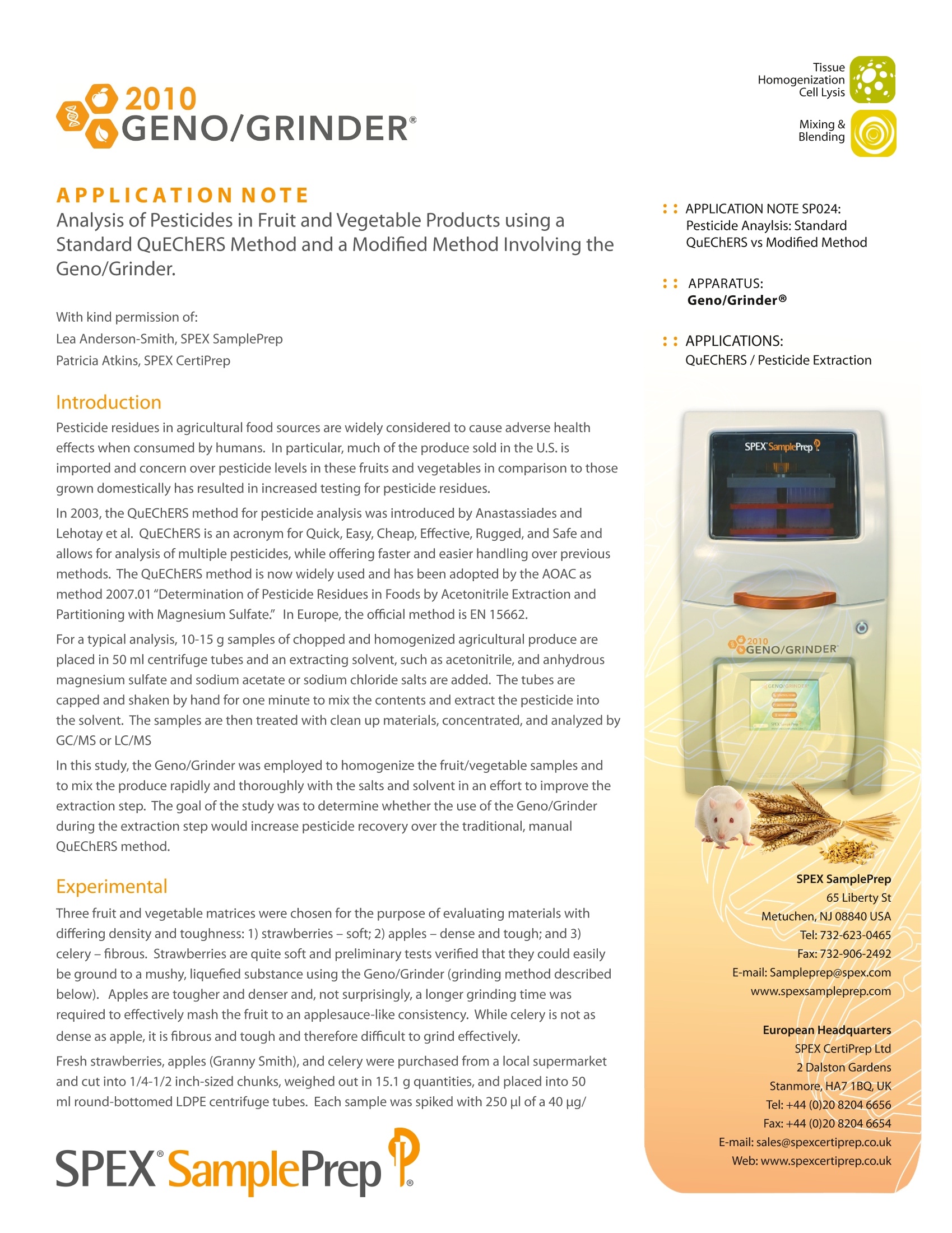
-
2/7
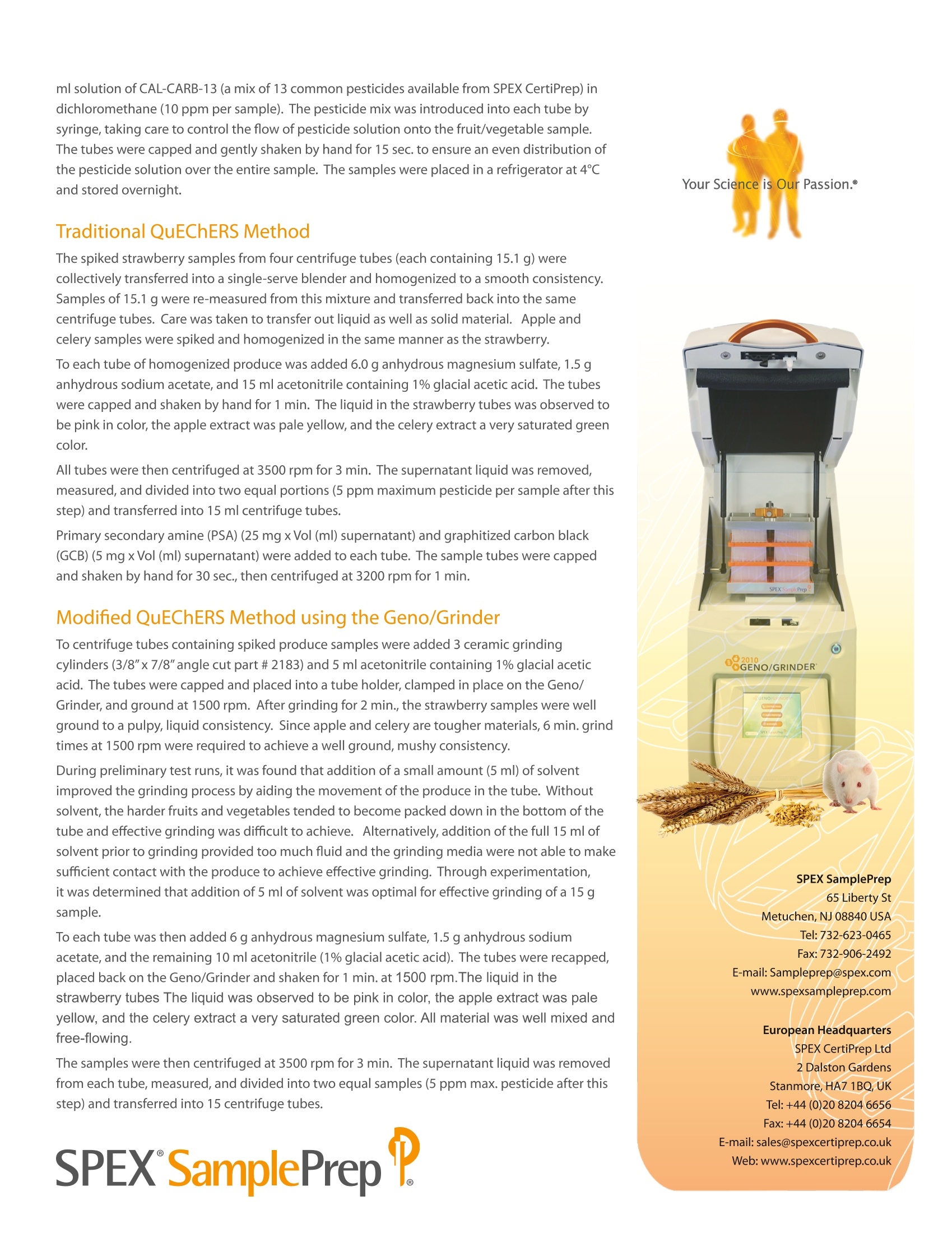
还剩5页未读,是否继续阅读?
继续免费阅读全文产品配置单
培安有限公司为您提供《食品(水果蔬菜)中农药残留检测方案(研磨机)》,该方案主要用于蔬菜中农药残留检测,参考标准《暂无》,《食品(水果蔬菜)中农药残留检测方案(研磨机)》用到的仪器有HG-600 Geno/Grinder (原SPEX 2010)高通量动植物组织研磨机。
我要纠错
相关方案



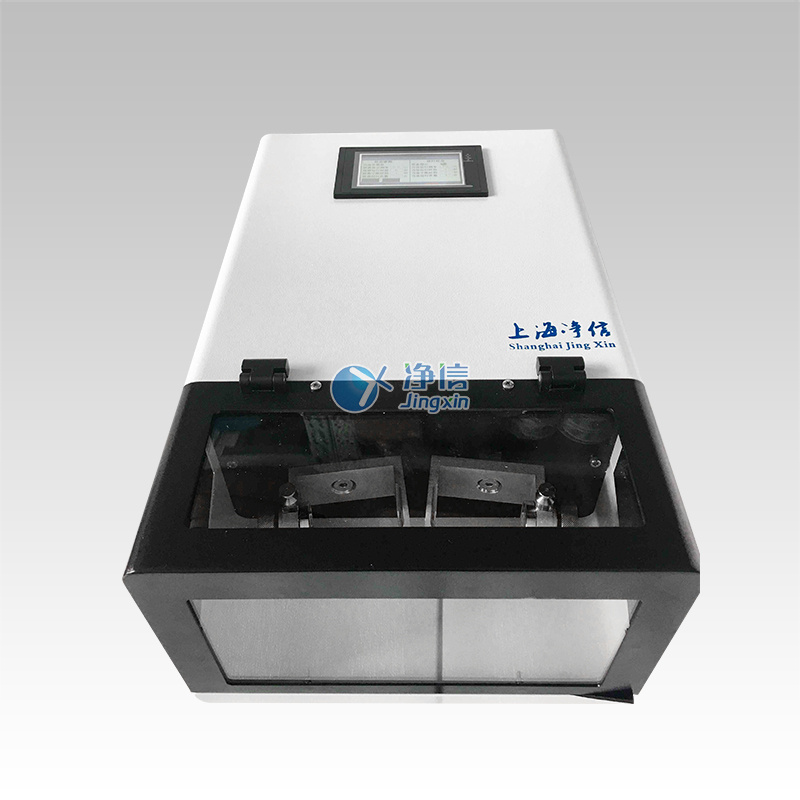
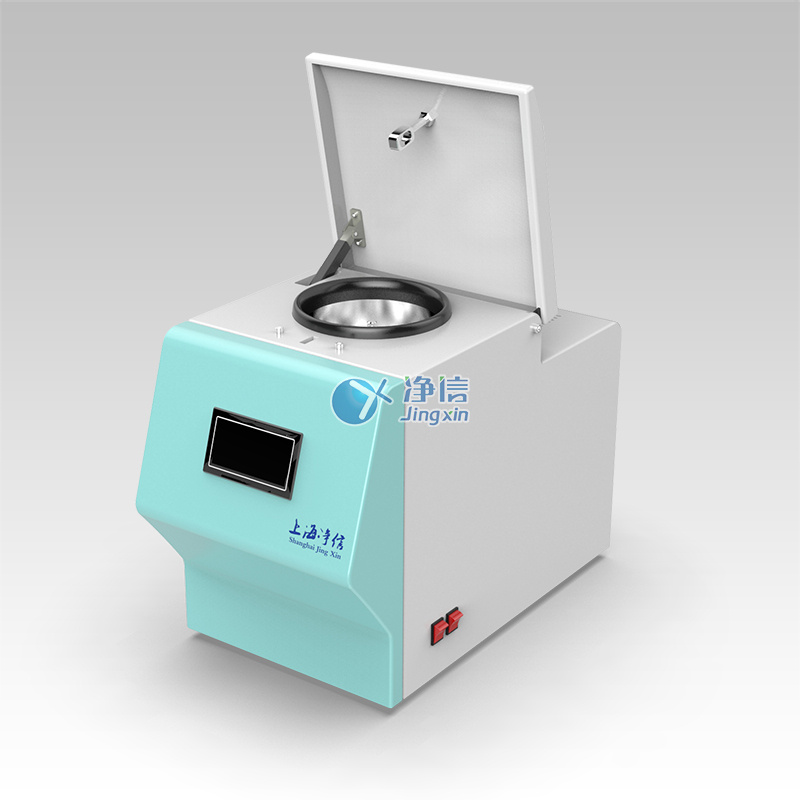
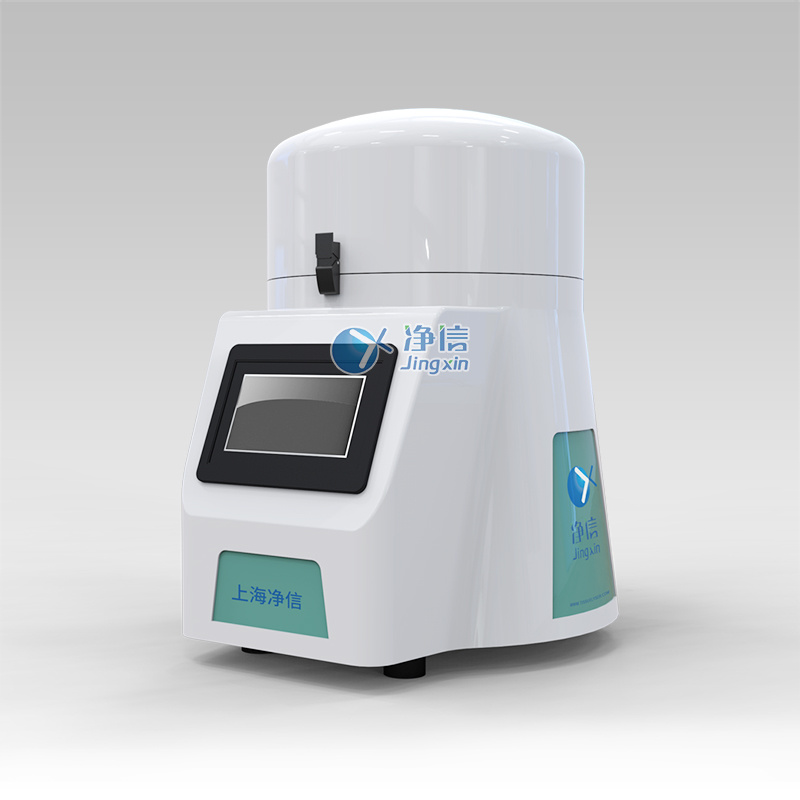
 咨询
咨询

